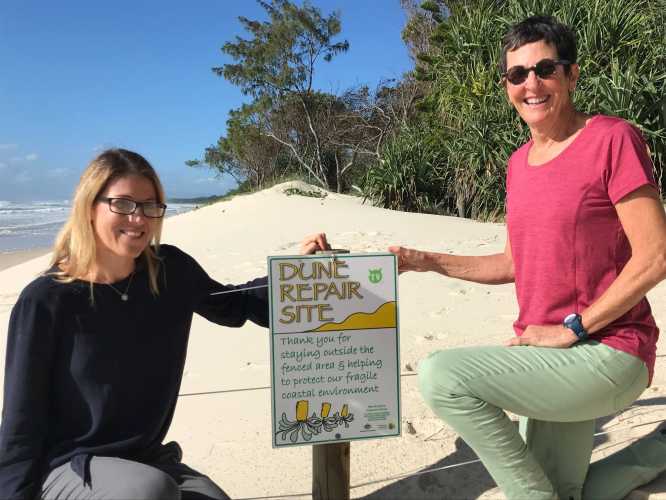
ONE OF the most useful and cost effective ways to rebuild sand dunes and restore beaches is through the technique of sand scraping, or beach scraping.
This has been proven through studies and beach scraping projects – and the evidence-base continues to grow.
Unfortunately, and despite the mountain of evidence, the rationale for beach scraping is often largely misunderstood by the communities it intends to protect.
[xyz-ihs snippet=”Servo”]
Perhaps the name is partly to blame. Over the years there have been many names for the beach ‘scraping’ technique but the more descriptive term for the methodology is the positively coined “Nature Assisted Beach Enhancement” or NABE.
While ‘scraping’ a beach might sound destructive to the natural environment, the truth is that the technique accelerates the natural process of dune re-building by moving sand from the intertidal area of the beach and placing it on the dunes or subaerial beach.
Byron Shire Council recently completed a program of beach scraping at New Brighton beach in October 2017 over a 3 week period with the primary objective of creating a larger sand dune to buffer against coastal erosion during storm events. For those of the community who may ask why scraping, (or NABE), is necessary at New Brighton, recent studies have predicted that a large ‘design’ storm could result in erosion of the beach by some 40 to 50 m landward, or 200 m3/m with parts of the main public road, The Esplanade and infrastructure under immediate threat.
A ‘design’ storm event is an extreme event relevant to the area based on a 100 year occurrence interval with waves of 7.5m in height and duration of 1 to 6 hours. The sand scraping method has been completed many times before, particularly after large storm events in the 1970s when the dunal area at New Brighton was almost completely lost.
What is commonly thought of as an ad hoc anthropogenic intervention of the coastal environment can actually be a successful management action for short to medium-term protection of coastlines subject to erosion and shoreline recession.
The success of the 2017 beach scraping program will be subject to the severity and frequency of future storm events after scraping has taken place. The recent high water levels and large swell events of December, January and February have seen localised erosion at New Brighton with large scarping of the dune face with some of this newly scraped sand lost offshore.
Dunes are vital features of the coastal environment and stable sand dunes play an important role in protecting the coastline. Dunes are considered to be “nature’s defence”, acting as a buffer against wave damage during storms and protecting land behind the dune from salt water intrusion.
Dune vegetation is vitally important and Council has recently completed a revegetation program and fencing of a section of the New Brighton dune to limit public access, dogs and trampling. The local volunteer Dune Care group has been working tirelessly to remove garden waste and clean up the area, weeding and planting native species.
The important points to remember are that beach scraping will not eliminate the threat to infrastructure and private property from a ‘design’ storm event but will certainly reduce the severity of this threat. It may provide a useful coastal adaptation method in the short to medium-term to reduce the risk to property and infrastructure from the immediate and medium term threat of coastal hazards.
When you next come to New Brighton beach, try to stay off the dunes and respect the work of others in the community who are committed to providing a healthy coastal environment for all to enjoy. Or why not get involved in this work and lend a helping hand?